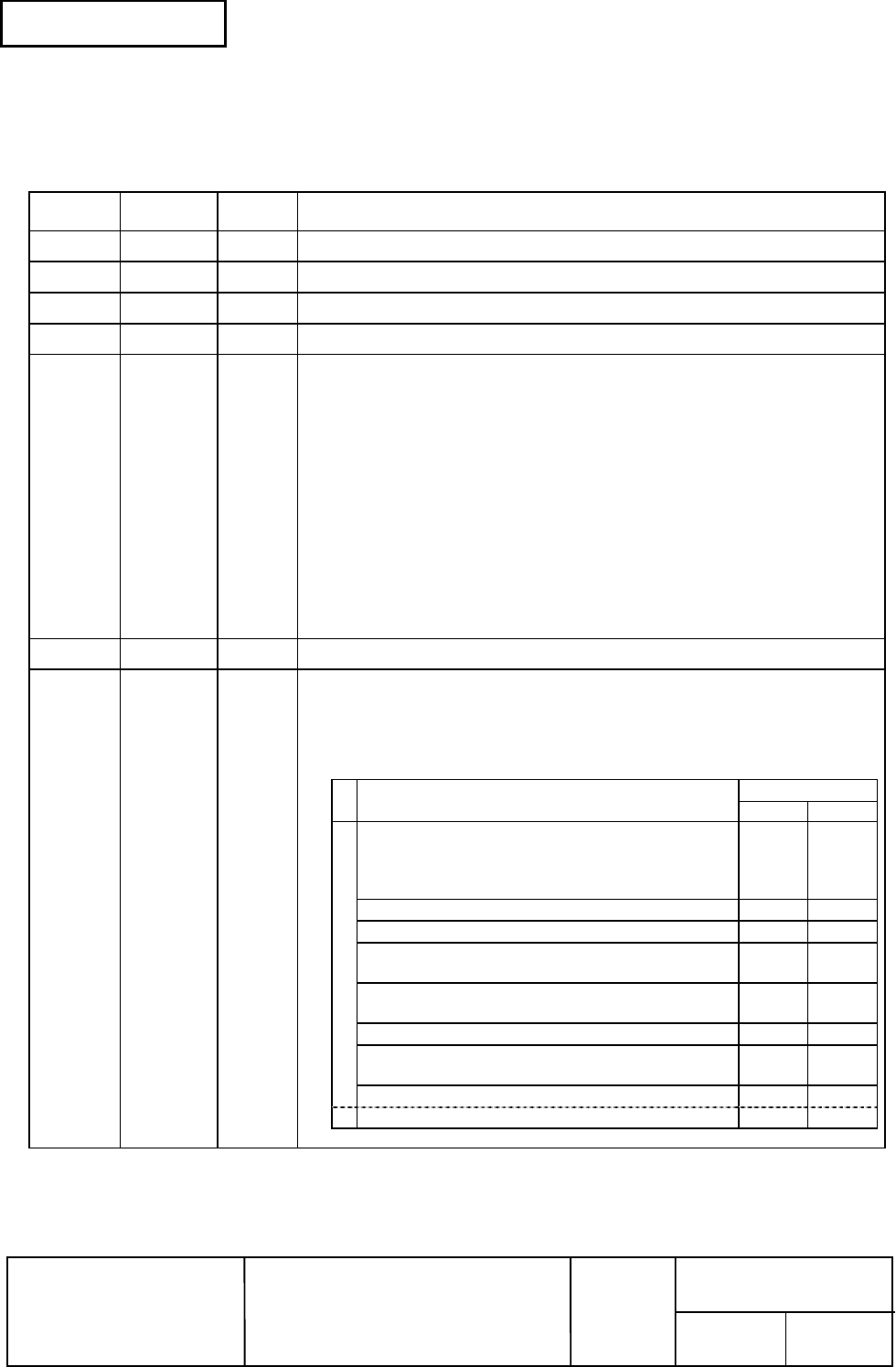
Confidential
EPSON
TITLE
SHEET
REVISION
NO.
SHEETNEXT
12 11
TM-T88III series
Specification
(STANDARD)
B
2.1.1.3 Interface connector terminal assignments and signal functions
Interface connector terminal assignments and signal functions are described in Table 2.1.1.
Table 2.1.1 TM-T88III Printer Status and Signals
Pin
number
Signal
name
Signal
direction
Function
1 FG — Frame ground
2 TXD Output Transmit data
3 RXD Input Receive data
4 RTS Output Same as DTR signal
6 DSR Input This signal indicates whether the host computer can receive data.
SPACE indicates that the host computer can receive data, and MARK
indicates that the host computer cannot receive data.
When DTR/DSR control is selected, the printer transmits data after
confirming this signal (except when transmitting data by DLE EOT, and
GS a).
When XON/XOFF control is selected, the printer does not check this
signal.
Changing the DIP switch setting enables this signal to be used as a
reset signal for the printer (refer to Section 3.3.3).
The printer is reset when the signal remains MARK for
1 ms or more. (refer to Section 2.1.1.7)
7 SG — Signal ground
20 DTR Output 1) When DTR/DSR control is selected, this signal indicates whether the
printer is busy. SPACE indicates that the printer is ready to receive
data, and MARK indicates that the printer is busy. The busy
condition can be changed by using DIP SW 2-1 as follows (refer to
Section 3.3.3):
DIP SW 2-1 status
Printer status ON OFF
1. During the period from when the power is
turned on (including resetting using the
interface) to when the printer is ready to receive
data.
BUSY BUSY
2. During the self-test. BUSY BUSY
3. When the cover is open. — BUSY
4. During paper feeding using the paper feed
button.
— BUSY
5. When the printer stops printing due to a
paper-end.
— BUSY
6. During macro executing standby status. — BUSY
7. When a temporary abnormality occurs in the
power supply voltage.
— BUSY
Offline
8. When an error has occurred. — BUSY
9. When the receive buffer becomes full.(*1) BUSY BUSY


















